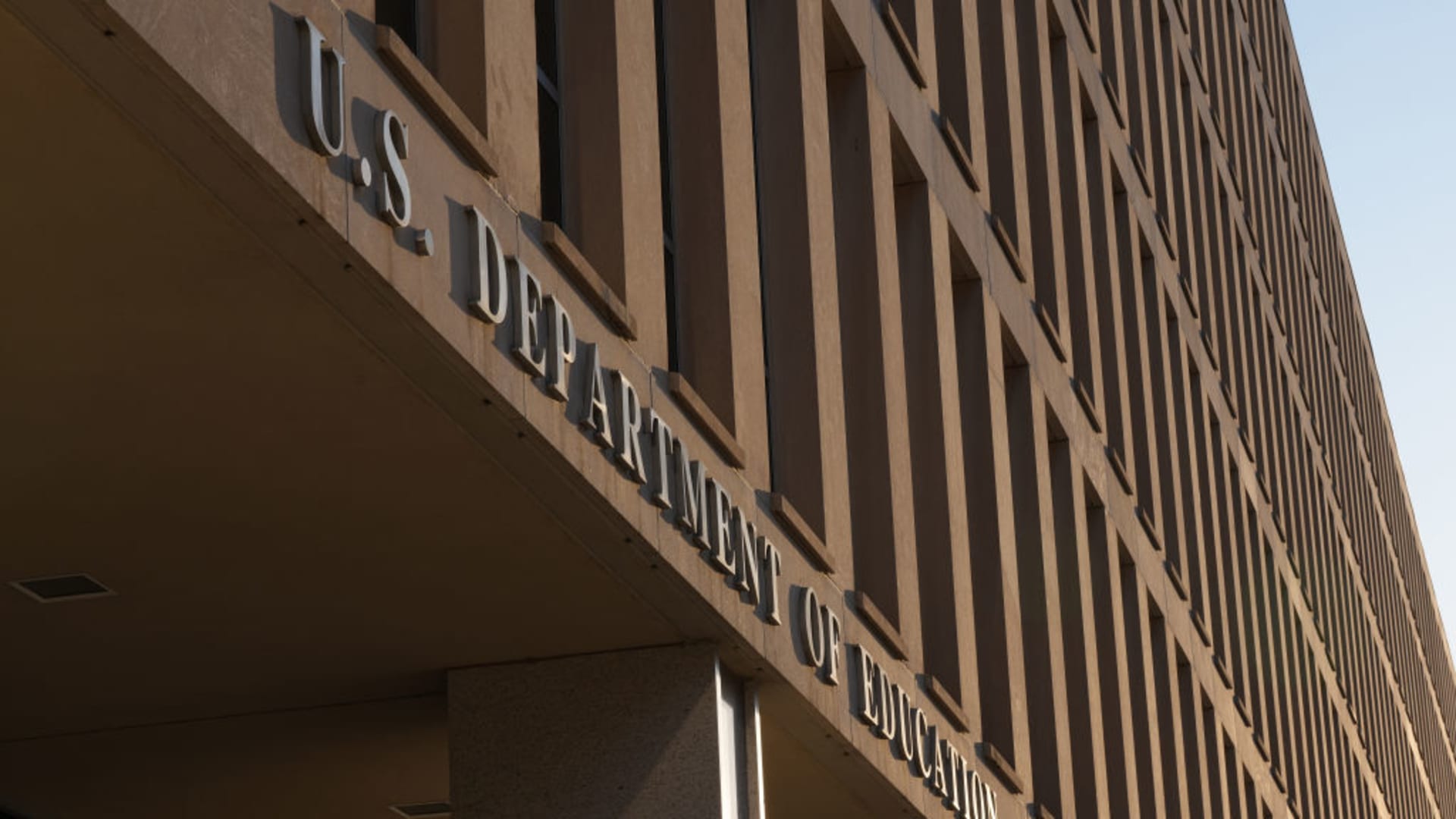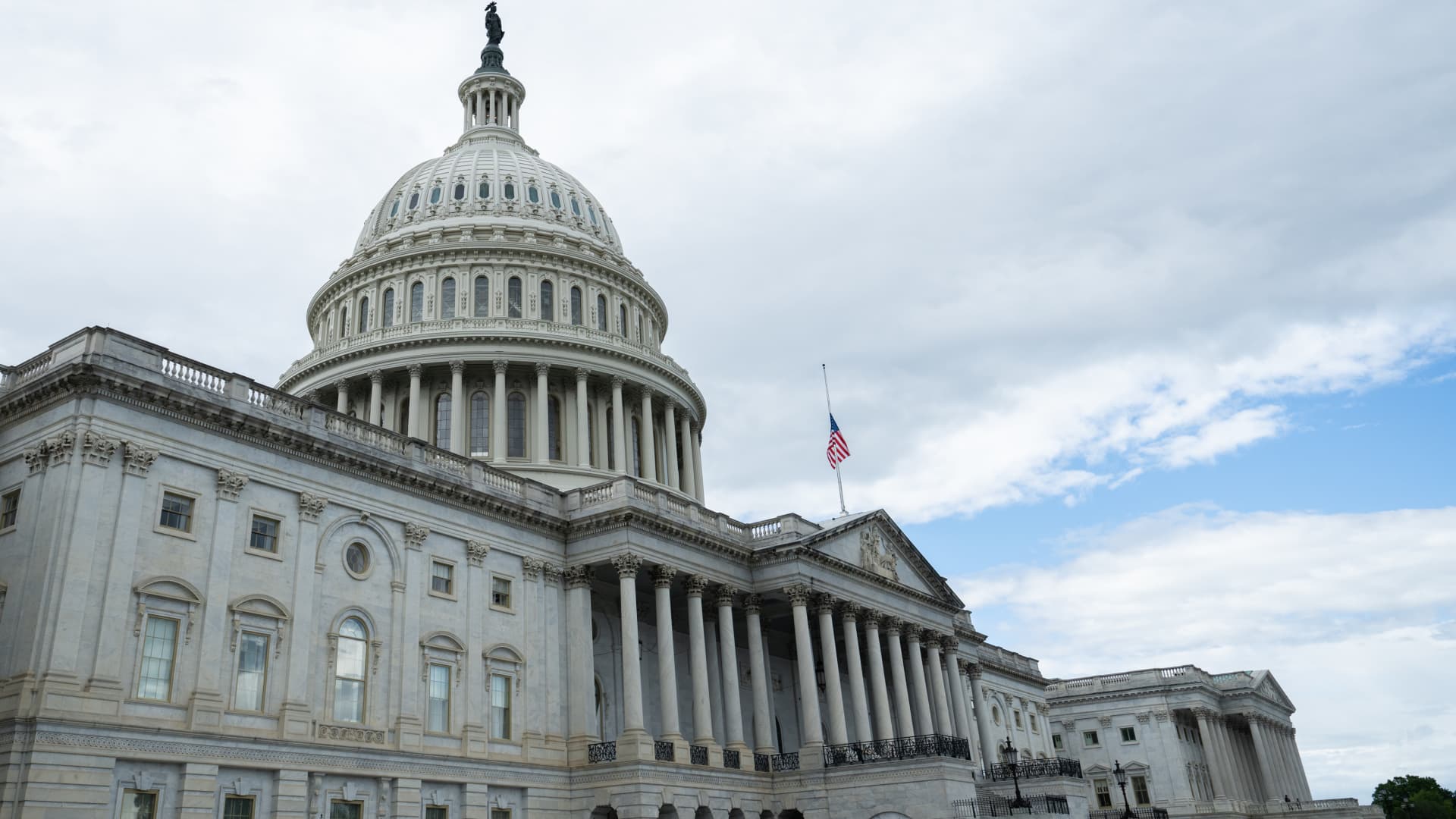David Espejo | Moment | Getty Images
Weary consumers, already grappling with high prices, now face an added potential risk: stagflation.
Stagflation — an economic term used to describe a combination of rising inflation, slower economic growth and high unemployment — may be on the horizon, according to economists.
“The Trump White House tariff policy has certainly increased the risk of both higher inflation and lower growth,” said Brett House, professor of professional practice in economics at Columbia Business School.
The Trump administration’s tariff policies are fueling stagflation conditions, according to the latest CNBC Rapid Update, which averages forecasts from 14 economists.
“It’s a more pronounced risk than at any time over the past 40 years,” said Greg Daco, chief economist at EY Parthenon and vice president at the National Association for Business Economics.
Uncertainty is already showing up in consumer confidence, said Diane Swonk, chief economist at KPMG.
“We’re seeing that kind of whiff of stagflation, where people are less secure about their jobs and they’re more worried about inflation down the road,” Swonk said.
What would stagflation mean in today’s economy?
Unidentified people line up with cans to buy gas at a Mobil gas station in Suffolk County, New York, in July 1979. In 1977 oil prices went up to more than $20 a barrel in response to increased demand and OPEC’s policy of limiting supply, which caused long lines at gas stations, and for the first time in history gasoline prices exceeded $1 a gallon.
Jim Pozarik | Hulton Archive | Getty Images
Stagflation was a major issue for the U.S. economy in the 1970s, when unemployment rates and inflation both rose as the country grappled with the costly Vietnam War and the loss of manufacturing jobs.
The 1970s-era stagflation is often associated with major oil price increases, leading to shortages and long lines at gas stations. However, some economists have argued it was actually monetary fluctuations that prompted stagflation.
The conditions prompted then Federal Reserve Chairman Paul Volcker to implement a dramatic tightening of monetary policy in the late ’70s and ’80s known as the “Volcker shock.” While inflation did come down as the Fed pushed interest rates higher, the central bank’s moves also prompted a severe recession — often defined as two consecutive quarters of negative gross domestic product growth — and higher than 10% unemployment.
Stagflation would not happen in the same way today, according to Dan Skelly, head of Morgan Stanley Wealth Management market research.
The U.S. is no longer at the whim of foreign oil, Skelly said. Moreover, unions, which prompted wage price spirals back then, are no longer as big a portion of the private work force today, he said.
The uncertainty around tariffs may affect corporate and consumer confidence, which would prompt spending and investment to slow, Skelly said. The likelihood of the growth slowdown part of stagflation is fairly high, he said.
However, Skelly said Morgan Stanley expects to see more effects in the stock market through earnings than in the economy.
Many firms are revising their economic forecasts, including the possibility of a recession, as a result of Trump administration policies, according to a new survey by Chief Executive.
Stagflation is not necessarily accompanied by a formal recession; rather, it can be slowing or stagnant growth, House said.
KPMG’s current forecast expects a shallow recession, with inflation peaking at the end of the third quarter.
“It’s not even what we saw during the pandemic,” Swonk said of the inflation spike. But it would be enough for employment to slow and to prompt a mild bout of stagflation, she said.
Stagflation, if it happens, would be the “worst of both worlds,” with higher unemployment and costs, Daco said.
“That represents a significant hardship for many families and businesses across the country,” he said.
How can you prepare for stagflation?
Athvisions | E+ | Getty Images
Americans may be facing a challenging economic period, with slower income growth, reduced employment prospects, higher unemployment and higher prices making it more difficult to stretch household budgets, according to House.
To prepare for stagflation, consumers would need to take all the steps they would in a recession as well as the steps they would take when prices are rising, said Sarah Foster, economic analyst at Bankrate.
As tariffs are expected to drive prices up, consumers may be tempted to buy ahead, even big-ticket items such as cars, laptops, smartphones or even homes.
Before making any such purchases, it’s important to make sure it’s in your budget, Foster said.
“It is absolutely wise right now to buy something that you know could be impacted by tariffs that you’ve already been budgeting for,” Foster said.
Yet consumers should be careful when it comes to “panic buying,” she said, or spending money to save money.
More from Personal Finance:
Tariffs, trade war inflation may be ‘pretty ugly’ by summer
What advisors are telling clients after bond sell-off
How a trade war could impact the price of clothing
Instead of overstretching their budgets with purchases, consumers should prioritize paying down high-interest credit card debt and building up an emergency fund. Focusing on high-interest debt first can save money in the long run, and having an emergency fund provides a financial safety net.
Experts generally recommend having at least six months’ expenses set aside. While it can be difficult to sock away extra money amid higher prices, the good news is higher interest rates are still providing inflation-beating returns on cash through online high-yield savings accounts that are FDIC-insured, Foster said.
For those who have been keeping cash on the sidelines rather than investing, now is the time to start allocating toward equities and riskier assets, considering the recent market drop, Skelly said.
“Don’t do it all in one day, but start winding down some of that cash, now that values are more fair than they were a month or two ago,” Skelly said.
Investors who have reaped big profits may want to rebalance to more neutral positions now, he said.
Can the economic forecast change?
Treasury Secretary Scott Bessent, rear left, and Commerce Secretary Howard Lutnick stand as President Donald Trump signs executive orders and proclamations in the Oval Office at the White House in Washington, April 9, 2025.
Nathan Howard | Reuters
There’s no guarantee stagflation will happen.
In 2022, one survey found 80% of economists said stagflation was a long-term risk.
But it was avoided at that time with a mix of strong economic growth, disinflation and a robust labor market encouraged by the Federal Reserve, Daco said.
Much of the risks popping up in today’s economic forecasts are the result of White House policies, economists say.
The Trump administration could reduce stagflation risks, Daco said, by reducing policy uncertainty, easing immigration restrictions that will reduce the labor supply, and not implementing tariffs on major trading partners.
House said the U.S. entered 2025 with a “well-performing economy,” which he said has been threatened by the Trump administration’s recent policy changes. It is up to the administration to unwind those policies and “prevent stagflation from occurring,” he said.
The White House did not respond to a request for comment from CNBC.


 Blog Post3 days ago
Blog Post3 days ago
 Economics1 week ago
Economics1 week ago
 Personal Finance7 days ago
Personal Finance7 days ago
 Economics7 days ago
Economics7 days ago
 Economics1 week ago
Economics1 week ago
 Accounting7 days ago
Accounting7 days ago
 Personal Finance1 week ago
Personal Finance1 week ago
 Finance7 days ago
Finance7 days ago











